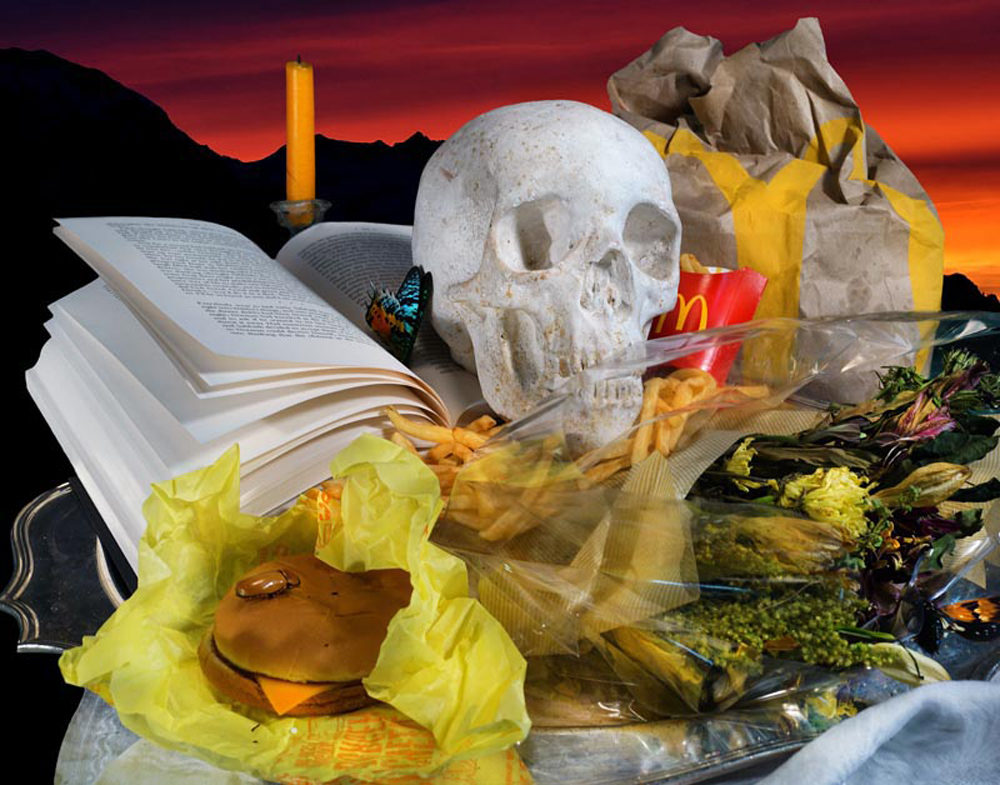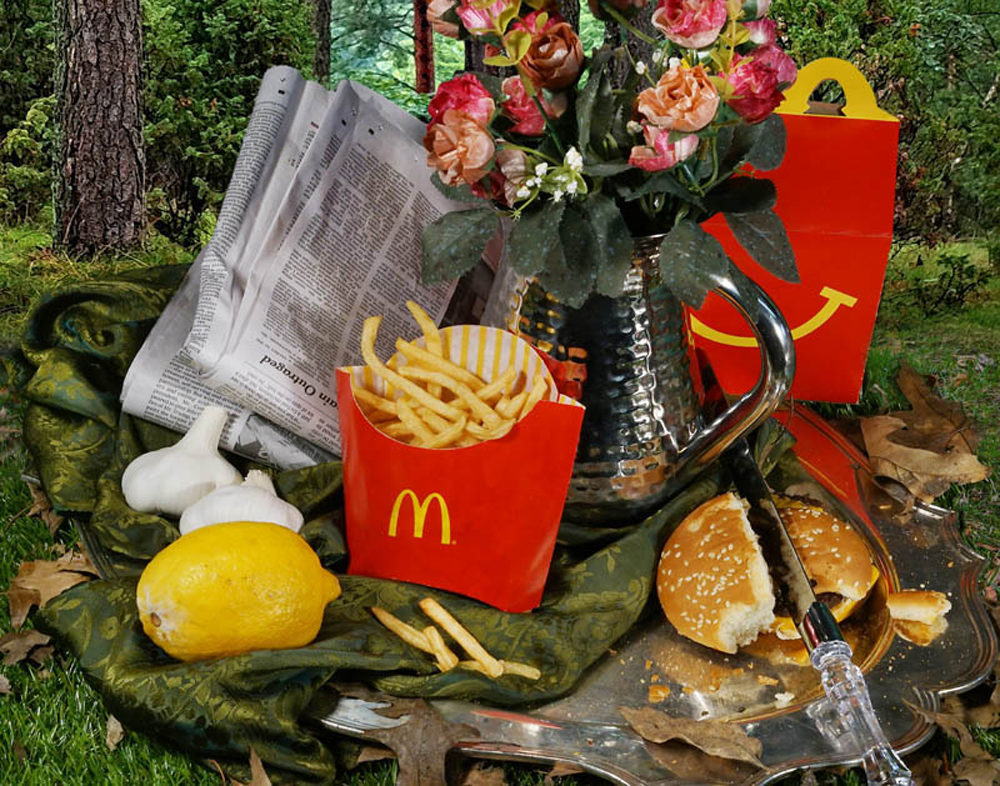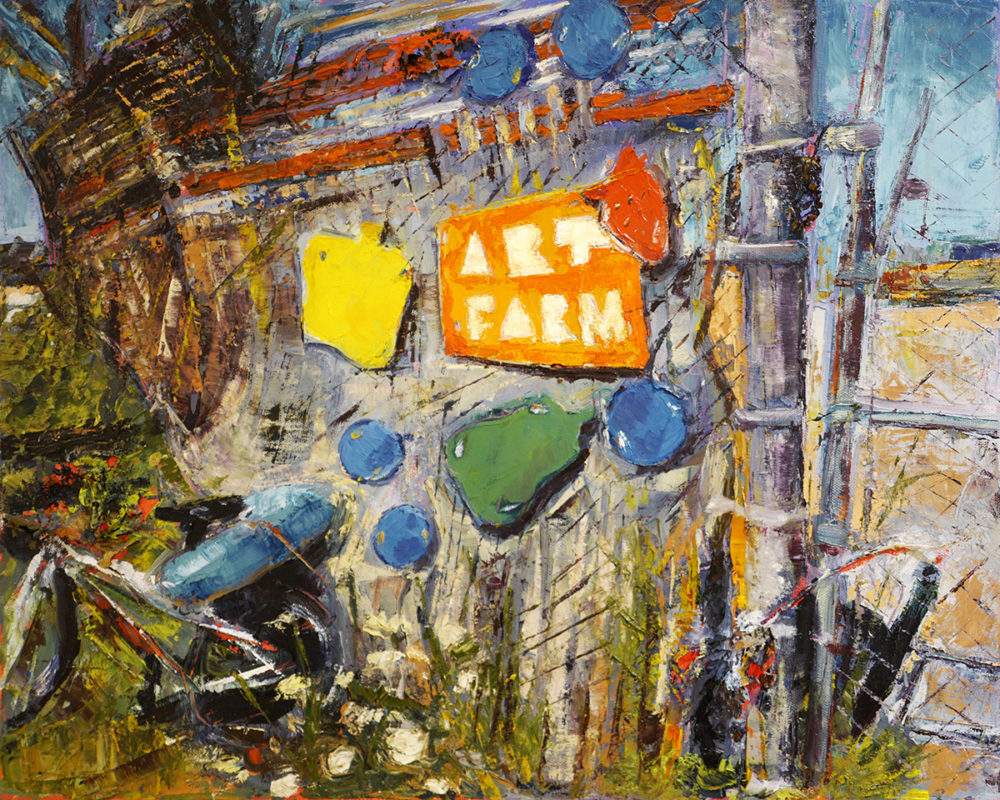Advertisement
This Art Exhibit Shows How Our Culture Of Disposability Is Affecting The Environment

What will the landscape paintings of the future look like, in a world of impending climate disaster and shrinking natural resources? How can artists respond to our culture of disposability and its effects on both the environment, and people and communities? And — at a time when we are inundated with dire information and predictions around these issues — can art actually move us toward action?
These questions and more are tackled in Unbound Visual Art’s expansive forthcoming exhibition “The Waste Land On Earth?” Twenty-four artists from the UVA community, working in a wide variety of media — from sculpture to oil painting to quilting to digital and video to performance art — reflect on mass consumption, climate change and industrialized society. The result is a sobering and thought-provoking experience that goes beyond the purely aesthetic, and confronts viewers with feelings of anxiety, despair — and maybe a touch of restrained optimism.

Michael McGlaughlin’s photo-realistic oil paintings capture the loneliness of suburban sprawl and the ugliness of accumulated “stuff” even in the beauty of their exquisite rendering. Gary Duehr’s “McVanitas” pigment print photographs parody the 17th-century Dutch still life vanitas paintings by placing human skulls, silver platters and cutlery, and vases of dried flowers alongside McDonald’s wrappers and half-eaten burgers and fries. Gulumhan Huma Yildirim’s interactive Go de Mieux website encourages us to enter what looks like a retail web store, then reveals the dark ethical truths behind our consumption of the products the website pretends to sell.
Elizabeth LaPides’ photographic collage "Coal Ash" seems abstract at first, with a pleasing palette of earthy grays and browns in fractal-like formations. At the top of the canvas, a metallic liquid swirl— or is it smoke? — billows and swells from faint, spindly, skyscraper-like figures that upon closer inspection are the burnt-out husks of a wildfire-ravaged forest. In the foreground, powdery-ash sits on stagnant water, and one can almost smell a faint chemical fume.
It’s hard not to view any of these pieces without feeling that our species is continuing to barrel down a truly misguided and self-destructive path. LaPides created "Coal Ash" by setting photos of ash-covered ponds and chemical spills from North Carolina’s Duke Energy coal plants against a background of a California forest destroyed by wildfires caused by the negligence of Pacific Gas and Electric. “The pollution our society generates is not isolated,” she says. “Ultimately, we all use fossil fuels [such as coal] to generate our power, and using fossil fuels makes the environment hotter and that leads to more wildfires.” By combining images from different locations with different environmental disasters she hopes to “close the circle of consequence and action.”

A few of the featured artists have personal experience and investment in the issues raised in "Waste Land," such as book artist Nancer Ballard, who’s had a 35-year career as an environmental lawyer. Ballard’s collaboration with Nick Constentino — the interactive "ECO-panes" — is a “sculptural art book” that combines mixed media visuals with prose, poetry, and factual texts on the interconnection of global warming causes and effects. As someone who works in the field, Ballard approaches the topic of climate change in her art with the aim to make it “as available and meaningful in a way that really affects someone ... intellectually and emotionally and in some way cellularly so that they … walk away and remember.”
One of the few moments of hope is offered by oil painter Madeline Lee, who chose to depict the Somerville Art Farm, a former waste incinerator site striving to become a community-envisioned and sustainable public park, urban agriculture oasis, and arts hub. In Lee’s paintings chain link fencing, bicycle parts, and discarded glass bottles coexist harmoniously with a natural landscape that seems to be reclaiming itself like foliage coming up through cracked concrete.

The bright orange "Art Farm" sign declares not only the name of a place-to-be but seems to also serve as a gentle yet emphatic response — perhaps even to the question posed by the exhibit's title.
Guest Curator Caitlin Bowler, whose long-standing interest in sustainability has always been as much about how our society’s disposable mindset affects us as it does the environment, says the exhibition is intended to stimulate conversation. She sees the opening reception — which features a performance, and an artist panel — as an opportunity to foster this. “There’s so much stuff in the news that you can feel just so small and useless,” she says, “but I’m hoping that by meeting people [at the reception] . . . [and realizing] they’re actual people, it’s not a Twitter thread, it’s not somebody far away in Washington . . . that maybe — [we realize that] we do have some agency."
"The Waste Land on Earth?" is on view at the Harvard Ed Portal, 224 Western Ave., in Allston through Aug. 21. The reception is scheduled for Thursday, Aug. 8, at 5 p.m.